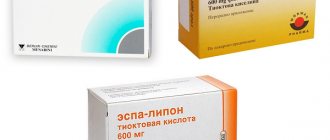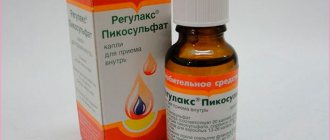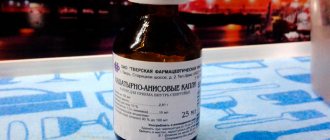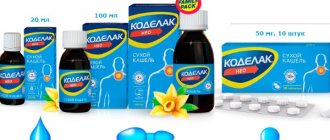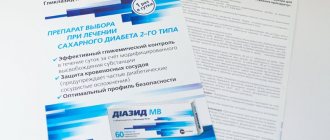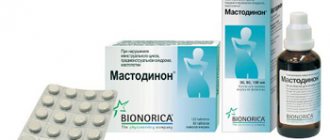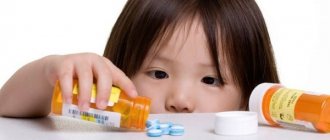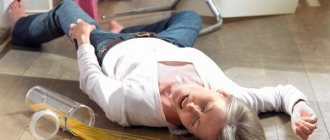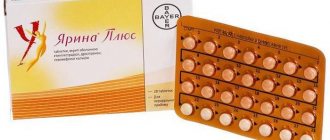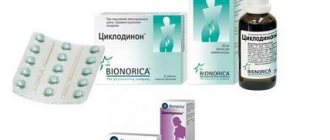Aminocaproic acid is a drug that has been used for more than 20 years to stop bleeding from the gastrointestinal tract and other anatomical areas where mechanical methods of hemostasis cannot be used.
It has an antiallergic effect, inhibits the formation of antibodies, increases the detoxification function of the liver, and reduces capillary permeability. Acid is used in various fields of medicine, including surgery and gynecology.
Release form
Transparent liquid without color:
- 100 ml of liquid in a bottle; 1, 10, 15, 24, 28, 30, 35, 48 or 36 bottles per carton.
- 200 ml of liquid in a bottle; 1 or 28 bottles in a cardboard box.
- 250 ml, 100 ml, 500 ml or 1000 ml liquid in a polymer container; one container in a plastic bag.
- 100 ml of liquid in a polymer container; 50 or 75 containers in a plastic bag.
- 250 ml of liquid in a polymer container; 24 or 36 containers in a plastic bag.
- 500 ml of liquid in a polymer container; 12 or 18 containers in a plastic bag.
- 1000 ml of liquid in a polymer container; 6 or 9 containers in a plastic bag.
White powder, odorless:
- 1 gram of powder in a bag, ten bags in a cardboard box.
Pharmacodynamics and pharmacokinetics
Pharmacodynamics
Hemostatic drug, fibrinolysis blocker.
Chemical formula – H2N(CH2)5COOH.
Blocks the effects of plasminogen , suppresses the action of plasmin , and does not completely inhibit kinins . It has antiallergic activity and slightly enhances the antitoxic function of the liver.
Pharmacokinetics
After oral administration, it is actively absorbed from the digestive tract. The highest concentration in the blood is reached after two hours. It is rapidly excreted in the urine, mainly unchanged. The half-life is approximately 2 hours.
Drug interactions
Being a drug primarily used for emergency care, aminocaproic acid is often used simultaneously with various medications, the interaction of which must be taken into account in order to achieve the maximum therapeutic effect and not cause harm.
- Anticoagulants: flenox, heparin, clexane, fraxiparine reduce the effect of acid. The drugs aspirin and cropidogrel - direct antagonists of caproic acid - also act.
- Combination with a number of antishock drugs in the form of glucose, hydrolyzate and others does not lead to a change in the effectiveness of the acid;
- The administration of aminocaproic acid must necessarily be accompanied by infusions of fibrinogen, since when using an acid solution, its level in the blood decreases significantly;
- Food enriched with fats is contraindicated in treatment due to the increase in lipids in the blood with its consumption, and this in turn leads to the binding of acid molecules, which can reduce its overall effect.
No medications should be added to the aminocaproic acid solution.
Indications for use
The use of the medicine is justified in the following conditions and situations:
- prevention of bleeding during interventions on the liver, pancreas, lungs;
- prevention and treatment of menorrhagia and bleeding from internal organs, mucous membranes, erosions of the stomach and intestines, as well as during menstruation;
- hyperfibrinolysis of various origins, including those associated with the use of thrombolytic drugs and transfusion of canned blood products in large volumes;
- treatment and prevention of influenza and ARVI ;
- for the symptomatic treatment of bleeding caused by thrombocytopenia platelet dysfunction .
Prescription for children
Treatment of children with Aminocaproic acid is possible from birth, but the administration of this medicine to babies in the first year of life should be carried out by a pediatrician. It is unacceptable to use Aminocaproic acid for children under one year of age without consulting a doctor and individually determining the required dosage.
Contraindications
- Hypersensitivity to the components of the drug.
- Hematuria.
- Hypercoagulability, coagulopathy due to diffusion, intravascular disseminated coagulation , predisposition to thrombosis or thromboembolic disease .
- Kidney diseases with excretory dysfunction.
- Cerebral circulation disorders.
- Pregnancy or lactation .
It is recommended to use the drug with caution in case of valvular heart disease, arterial hypotension, hematuria, cryptogenic bleeding from the upper urinary tract, insufficiency of liver function, chronic insufficiency of kidney function, and age less than one year.
Medicinal properties
According to the radar, the name of the drug in Latin coincides with the INN (international nonproprietary name). Epsilon-aminocaproic acid (chemical formula represented by NH2(CH2)5COOH) is classified as an artificial analogue of a substance such as lysine. It inhibits fibrinolysis, while saturation of lysine-binding receptors occurs, they promote the binding of plasmin to fibrin.
The mechanism of action is based on the inhibition of biogenic polypeptides - kinins, the effect of kallikrein, hyaluronidase, and trypsin is neutralized. A decrease in the permeability of capillary walls is recorded, antihistamine activity appears, the detoxifying function of liver cells increases, and the process of antibody formation is inhibited.
With intravenous infusion, the effect of using epsilon-aminocaproic acid is observed after 15-20 minutes. A high degree of absorption is recorded, the highest plasma level is reached after 2 hours. The half-life is 4 hours.
Approximately 40-60% of the administered dose is excreted in its original form with the participation of the renal system. In case of impaired renal function, an increase in aminocaproic acid in plasma is observed.
Instructions for use of Aminocaproic acid (Method and dosage)
Aminocaproic acid, instructions for use of solution
The solution is administered intravenously, drip. To achieve rapid action (for example, in acute hypofibrinogenemia ), up to 100 ml of a 5% solution is prescribed at 50-60 drops per minute for 20-30 minutes. In the first hour, 4-5 grams of the drug (about 100 ml) are administered, and then, if necessary, 1 gram (about 20 ml) per hour for another 8 hours or until the bleeding completely stops. If bleeding continues or bleeding occurs again, the drug is administered every 4 hours.
In pediatric patients, the drug is administered at the rate of 100 mg per kilogram of body weight per hour, and then at the rate of 33 mg per kilogram of body weight per hour; the highest daily dose is 18 grams per square meter of body surface area.
Daily dose:
- for adults equal to 5-30 g;
- for children less than 1 year old it is equal to 3 grams;
- for children 2-6 years old is equal to 3-6 grams;
- for children 7-10 years old it is 6-9 grams;
- For children over 11 years old, adult dosages are used.
For acute blood loss, the following dosages are used:
- children under 12 months are given 6 grams of the drug;
- children 1-4 years old are given 6-9 grams of the drug;
- children 5-8 years old are given 9-12 grams of the drug;
- Children 9-10 years old are given 18 grams of the drug.
The duration of treatment ranges from 3-14 days.
Aminocaproic acid, instructions for use of powder
After dissolving the powder in water, it is taken orally after or during meals. The daily dose for adult patients is divided into 3-6 doses, and for pediatric patients - into 3-5 doses.
With an average degree of increase in fibrinolytic activity, the drug is usually prescribed in a daily dose of 5-23 grams. Children under 1 year of age are prescribed a single dose of 0.05 grams per kilogram of weight (but not more than 1 gram). Daily dosage for children: up to 1 year is 3 grams, 1-7 years – 3-6 grams, 7-11 years – 6-9 grams. For adolescents (over 11 years old), the highest daily dose is 10-15 grams.
When treating acute bleeding , 5 grams of the drug are first prescribed, and then 1 gram once an hour (no more than 8 hours) until the bleeding completely stops. Daily dosage for pediatric patients with acute blood loss: up to 1 year is 6 grams, 1-5 years - 6-9 grams, 5-9 years - 9-12 grams, 10-11 years - 18 grams.
When treating subarachnoid hemorrhages, 6-9 grams of the drug are prescribed.
When treating traumatic hyphema, the drug is recommended at a dose of 0.1 grams per kilogram of body weight every four hours (up to 24 grams per day in total) for 5 days.
For uterine bleeding (metrorrhagia) associated with intrauterine contraceptives, and for menstruation, 3 grams of medication is prescribed every 6 hours.
To prevent and stop bleeding during dental interventions, adults are recommended to take 2-3 grams of medication up to 5 times a day. For adult patients, the average dosage is 10-18 grams of medication, and the maximum allowable is 4 grams. The duration of treatment is 3-14 days.
For influenza and ARVI , the medicine is used orally and topically. For oral use, 1 gram of the drug is first diluted in 2 tablespoons of a little sweet boiled water, resulting in a 5% solution.
This solution is prescribed orally in the following dosages:
- for children under two years old, 1-2 teaspoons (1-2 grams) four times a day, they are allowed to be added to drinks or food;
- children 2-6 years old: 1-2 tablespoons (2-4 grams) four times a day;
- children 6-10 years old 4-5 grams per day;
- Patients over 10 years of age are prescribed 1-2 grams up to 5 times a day.
Aminocaproic acid for the nose
It is also recommended to use the drug Aminocaproic acid in the nose (for a child or an adult), locally. Place a cotton swab into the nasal passage for 10 minutes every three hours, pre-moistened with a solution of 5% Aminocaproic acid, or, observing the specified frequency, instill 4-5 drops of the solution into the nasal passages. The drug can be used for inhalation by children and adults. In such cases, a nebulizer can be used for inhalation for the child.
In severe hypertoxic types of influenza or ARVI, the dosage of the drug is allowed to be increased to the maximum recommended at a given age with a moderate increase in fibrinolytic activity.
Aminocaproic acid, if necessary, can be used in combination with other antiviral drugs, interferon-containing agents and interferon inducers .
Intranasal instillation of Aminocaproic acid up to four times a day is advisable to carry out during the epidemic period for prevention.
The duration of therapy depends on the severity of the disease and is determined individually by the doctor.
Side effects
The medicine is eliminated from the body quite quickly, and its toxic effect with the correct dosage is minimal, however, in some patients, treatment with Aminocaproic acid leads to:
- Skin rashes.
- Acute renal failure.
- The appearance of vomiting, nausea or loose stools.
- Headaches.
- Nasal congestion.
- Reduced blood pressure.
- Dizziness.
- Destruction of muscle tissue.
- Orthostatic hypotension.
- Cramps.
- Subendocardial hemorrhage.
If such symptoms appear, for example, vomiting or skin rash, the dosage of Aminocaproic acid is reduced or treatment with this drug is abandoned.
If, when instilling the nose, the medicine accidentally gets into the eye, you should immediately rinse the mucous membrane and, if the child has visual complaints, consult an ophthalmologist.
Aminocaproic acid price, where to buy
The price of Aminocaproic acid 5% 100 ml in Russia is 35-55 rubles, in Ukraine the price of this form of release is 12-26 hryvnia.
- Online pharmacies in RussiaRussia
- Online pharmacies in UkraineUkraine
- Online pharmacies in KazakhstanKazakhstan
LuxPharma* special offer
- Aminocaproic acid 50 mg/ml 5% vial.
100ml No. 1 1400 rub. order
show more
Pharmacy24
- Aminocaproic acid 0.5 No. 20 tablets PRAT "Fitofarm", Ukraine
25 UAH. order - Aminocaproic acid 5% 100 ml solution ZAT"Infusion", Ukraine
27 UAH order
- Aminocaproic acid 50 mg/ml 100 ml No. 1 PrAT solution” Pharmaceutical company “Darnitsa”, Ukraine
19 UAH order
- Aminocaproic acid 5% 100 ml solution Novofarm-Biosintez TOV, Novograd-Volinsky, Ukraine
18 UAH order
- Aminocaproic acid 5% 100 ml solution TOV "Yuriya-Pharm", Ukraine
28 UAH order
PaniPharmacy
- Aminocaproic acid infusion Aminocaproic acid solution for infusion. 50mg/ml 100ml vial. No. 1 Ukraine, Darnitsa ChAO
19 UAH order
- AMINOCAPRONIC ACID tablets Aminocaproic acid tablets. 0.5g No. 20 Ukraine, Fitofarm ChAO
29 UAH order
- AMINOCAPRONIC ACID Aminocaproic acid. 1g drinking №10 Ukraine, Health LLC
117 UAH. order
- AMINOCAPRONIC ACID infusion Aminocaproic acid solution inf. 5% 100ml Ukraine, Novofarm-Biosintez LLC
20 UAH order
- AMINOCAPRONIC ACID infusion Aminocaproic acid solution d/in. 5% 100ml Ukraine, Yuria-Pharm LLC
26 UAH order
show more
Analogs
This is an original medicinal solution that has no analogues. However, the drug Polycapran has the same active ingredient.
If the reason for using Aminocaproic acid is bleeding, then the drug can be replaced with other hemostatic drugs. An example would be Tranexam or Ambien.
If for some reason it is impossible to treat a child’s runny nose with Aminocaproic acid, you can put the following medications in his nose:
- Pinosol, Eucasept and other oil drops. Dr. Komarovsky speaks positively about such drugs in the treatment of runny nose.
- Aqua Maris, Marimer, Aqualor Baby and other preparations based on sea water or sodium chloride.
- Otrivin, Nazivin, Tizin and other vasoconstrictor medications for the common cold.
